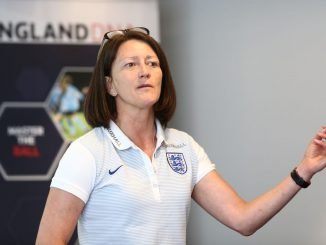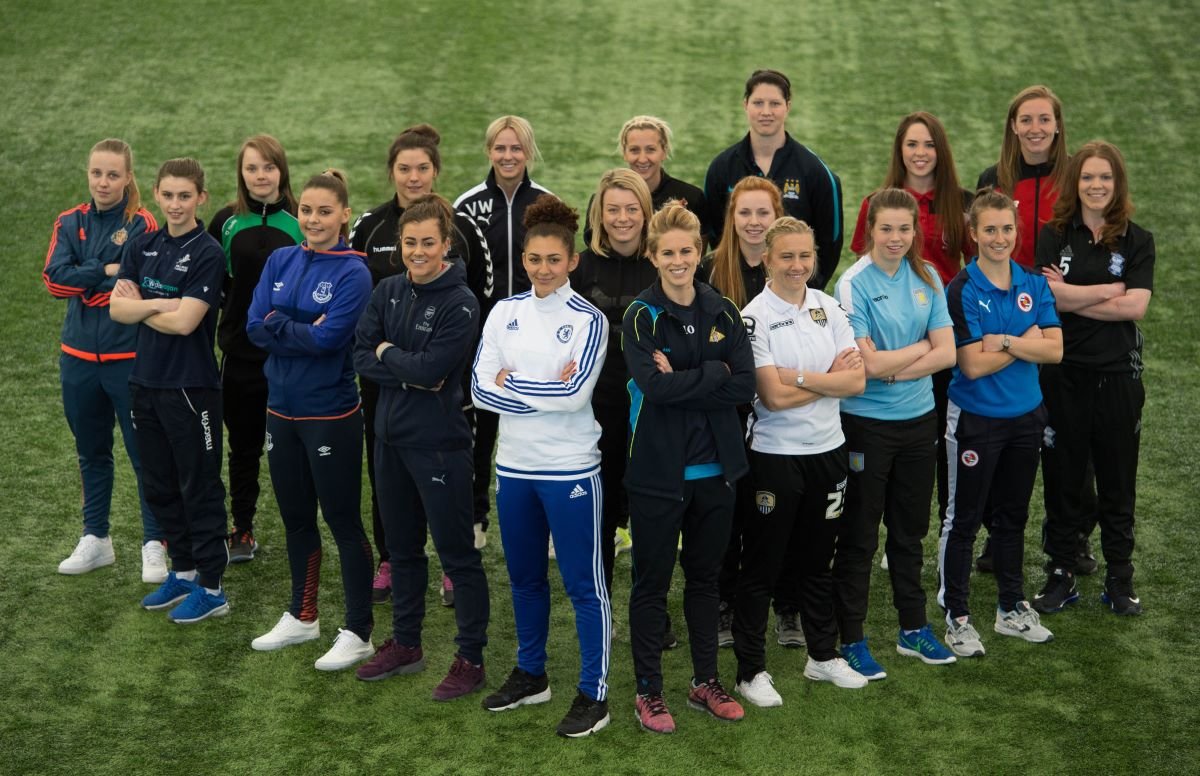
In the sixth and final review, The FA looks at The Gameplan for Growth’s journey to develop and grow the women’s professional game in England.
ACHIEVEMENTS:
Performance & Governance:
- The creation of a 12 team, fully professional top flight league
- The establishment of a semi-professional tier 2 FA Women’s Championship
- Restructure of the competition pyramid, moving to a winter season with improved scheduling
- A high-performance system to drive league standards and support England teams
- Enhanced licensing criteria across the Barclays FA Women’s Super League and FA Women’s Championship to improve performance on and off the pitch
- The introduction of an FA Women’s Super League & FA Women’s Championship Board, with senior club representation to drive the strategic growth and development of the leagues Commercial:
- Barclays’ multi-million-pound title partnership of the FA Women’s Super League, the biggest ever investment in UK women’s sport by a brand
- A new brand identity across the Barclays FA Women’s Super League, FA Women’s Championship, FA Women’s National Leagues and the FA Women’s Continental Tyres League Cup
- Continental Tyres renewal as title partner to the FA Women’s Continental Tyres League Cup
- A new partnership with Mitre to become the Official Football Supplier across the Barclays FA Women’s Super League, FA Women’s Championship and Women’s FA Cup
- Disney, BT and Deliveroo securing Women’s FA Cup rights
- Introduction of a £500k prize-fund in the Barclays FA Women’s Super League
- Establishing Commercial Committees for the Barclays FA Women’s Super League and FA Women’s Championship to help achieve increased financial sustainability for the leagues and clubs
Fanbase:
- Average attendance of 3,072 in the Barclays FA Women’s Super League in 2019-20
- 174% increase in attendance at Barclays FA Women’s Super League games from 2016 to 2019-20
- A record Barclays FA Women’s Super League crowd of 38,262 for Tottenham Hotspur vs Arsenal in November 2019
- 257% increase in the number of domestic games broadcast from 2016 to 2019-20
- Televised peak audiences for Barclays FA Women’s Super League up by 231% from 2016 to 2019-20
- A league peak television audience of 270,000 for Chelsea vs Tottenham Hotspur in September 2019
- Record peak television audience of 2.2m on BBC One for the 2019 Women’s FA Cup Final
- Record Women’s FA Cup Final attendance of 45,423 in May 2018
- Record FA Women’s Continental Tyres League Cup crowd of 6,743 in February 2020
- The creation of The FA Player with nearly 100,000 subscribers in the first season and allowing every Barclays FA Women’s Super League to be shown live
Global Growth:
- FA Player subscribers from over 150 countries
- Four international Barclays FA Women’s Super League broadcast deals in Mexico & Central America, Scandinavia, Australia and Israel for the 2019-20 season
FA NARRATIVE – Kelly Simmons [Women’s Professional Game Director]

“I describe my journey to a career in football as a bit of an accident. I’ve always been a football obsessive, but it was never my life plan to dedicate a career to the game. To be honest, I didn’t think a career in football existed for a female. One of the big driving forces behind the career I have forged is that I wasn’t allowed to play football at school. That’s why I’m so passionate about helping to leave a legacy for this generation to have many more opportunities than I had. Now it is a fantastic industry for a female to work in, whether you want to be a professional player, coach, referee, lawyer, marketeer; there’s plenty of different options available. The fully professional Barclays FA Women’s Super League [WSL] is a prime example of that, you have more and more women in roles on and off the pitch, and it’s absolutely brilliant to see. We need to champion and encourage that.
I’d enjoyed a variety of roles at The FA before I took my current role as Women’s Professional Game Director in September 2018. My remit is to help transform the women’s pyramid and deliver professional women’s football in England. As well as the Barclays FA WSL, the role includes the FA Women’s Championship, The FA Women’s National Leagues and the Women’s FA Cup and Continental Tyres League Cup.
My role coincided with the landmark first season of a fully professional FA WSL in 2018-19, seven years after its creation in 2011. I was in no doubt the role was a big challenge, but a very exciting one.
Our ambitions are big. No women’s sport has yet broken through and competed with men’s sports and leagues. But I genuinely believe that our leagues can be the catalyst for women’s sport breaking into the mainstream, getting domestic exposure week in, week out. With that comes transformational change; new fans, increased revenue and the world’s best players. We want the Barclays FA WSL to be the world’s most successful league, on and off the pitch. For that vision to be achieved, we needed to work more closely than ever with the clubs. In the short-term we needed to help guide the clubs from a semi-professional to professional environment.
The increased expectations, standards and criteria meant it was a big leap for many, but one that they collectively saw the importance of taking. I don’t think I am overstating it when I say that going fully professional was probably the biggest decision in the history of the domestic game and will be fundamental in shaping its future. I’m very proud on how far we’ve come in two seasons. The long term future of the league needs to be shaped by the clubs and we are working closely to do that.
The introduction of the joint FA Women’s Super League and FA Women’s Championship Board gives the clubs greater representation and ownership of the future professional game strategy and policy decisions. Shaped by the Board’s commercial and football expertise, the professional game strategy will be launched early next season and will outline the long-term plan to grow audiences and revenue to achieve commercial sustainability for the leagues and the clubs.
One of my first objectives in the role was to secure a title partner for the league. The word ‘gamechanger’ is probably over used, but the record multi-million-pound deal with Barclays was exactly that. The biggest ever investment in UK women’s sport by a brand was a statement of intent and demonstrated that Barclays shared our vision to transform the future of women’s football, of equal access to football for girls and the dream of being a professional footballer. I’d also like to put on record my gratitude to Continental Tyres who continued their 10-year association with women’s football, when they renewed their title partnership for The FA Women’s Continental Tyres League Cup. We were also delighted to welcome Mitre, who joined us on the journey when they became the leagues and cups’ Official Football Supplier. Title partners for The FA Women’s Championship and the Women’s FA Cup still remain a priority.
We want to make sure professional women’s football is on solid foundations for the future, supporting the clubs to get more of their own revenue streams, being sustainable and removing the reliance on investment from men’s club grants so it can wash its own face and thrive. The introduction of Commercial Committees for each league will be key and will help us develop a bespoke commercial strategy for both the league and the participating clubs.
Last summer’s FIFA Women’s World Cup was a big moment in the league’s development. The Semi-Final was the second most-watched sporting fixture on TV in 2019 – that’s remarkable and shows how far we’ve come to break down the cultural barriers. Millions of people had declared their interest in women’s football and thanks to some excellent marketing and the support of our broadcast partners, for the first-time we have managed to hold onto a major event’s coattails and convert that interest into the domestic game. Games at Anfield, The Etihad Stadium, The London Stadium, Stamford Bridge and The Tottenham Hotspur Stadium this season shows how far we have come in a relatively short space of time. If you told me when I took the job that within two years I’d be watching a league fixture with over 38,000 other fans at one of the best stadiums in the world – I’d have dismissed it as wishful thinking.
Although the main stadia have attracted the headlines, it’s important to note that there’s been an increase in attendances week in, week out. The use of main stadia fits in with our strategy of making big games bigger, but long-term we know many of the regular ‘home’ stadia need to represent the growth of the game. Everton’s move to Walton Hall Park, is a good example. Just a 15-minute walk from Goodison Park, it provides them with a permanent home and will enable them to capitalise on their catchment area to drive attendances and interest.
Our focus hasn’t just been on match attendance. When I speak to fans of the league, The FA Player is a reoccurring conversation. Free to download, the dedicated mobile app provides live access to over 150 domestic football fixtures. Our research showed that fans were struggling to find women’s football and there was an appetite to consume the game beyond traditional channels. Nearly 100,000 subscribers in year one demonstrates its potential and it will remain a crucial tool in building our fanbase at home and abroad.
The FA Player has given us the opportunity to shine a light on the FA Women’s Championship, with a weekly fixture. We don’t want to accidently create a closed league with too big a gap between the two divisions, so it is vital we support the second tier clubs to grow their audience, attendances and revenue. The standard of the FA Women’s Championship is higher than ever and after securing promotion it was no surprise to see Manchester United and Tottenham Hotspur flourish in their first-ever top flight seasons. We are all really looking forward to welcoming Aston Villa next season.
We remain indebted to our broadcast partners BT Sport and the BBC for their continued commitment to grow the game. More domestic games are now being broadcast than ever and TV audiences continue to rise. We’re also starting to produce revenue from global TV rights and we’ve secured four international Barclays FA WSL broadcast deals in Mexico & Central America, Scandinavia, Australia and Israel for the 2019-20 season, with a plan in place to increase this further.
Recent months have been a challenging time for football and we’ve had to make some difficult decisions, decisions that would have been completely unforeseen at the start of the season. Despite the curtailment, it is important to remember we’re on a journey and we are going from strength to strength both on and off the pitch. The circumstances don’t alter our total commitment to growing the game and the leagues. The early curtailment allows us more time to plan to come back bigger and better in 2020/21 and we will ensure this momentum continues. We’re planning to start the new season on the weekend of 5/6 September and we’ll be back with leagues that you can be proud of.”
FA NARRATIVE – David Faulkner [The FA’s Head of Women’s Performance]
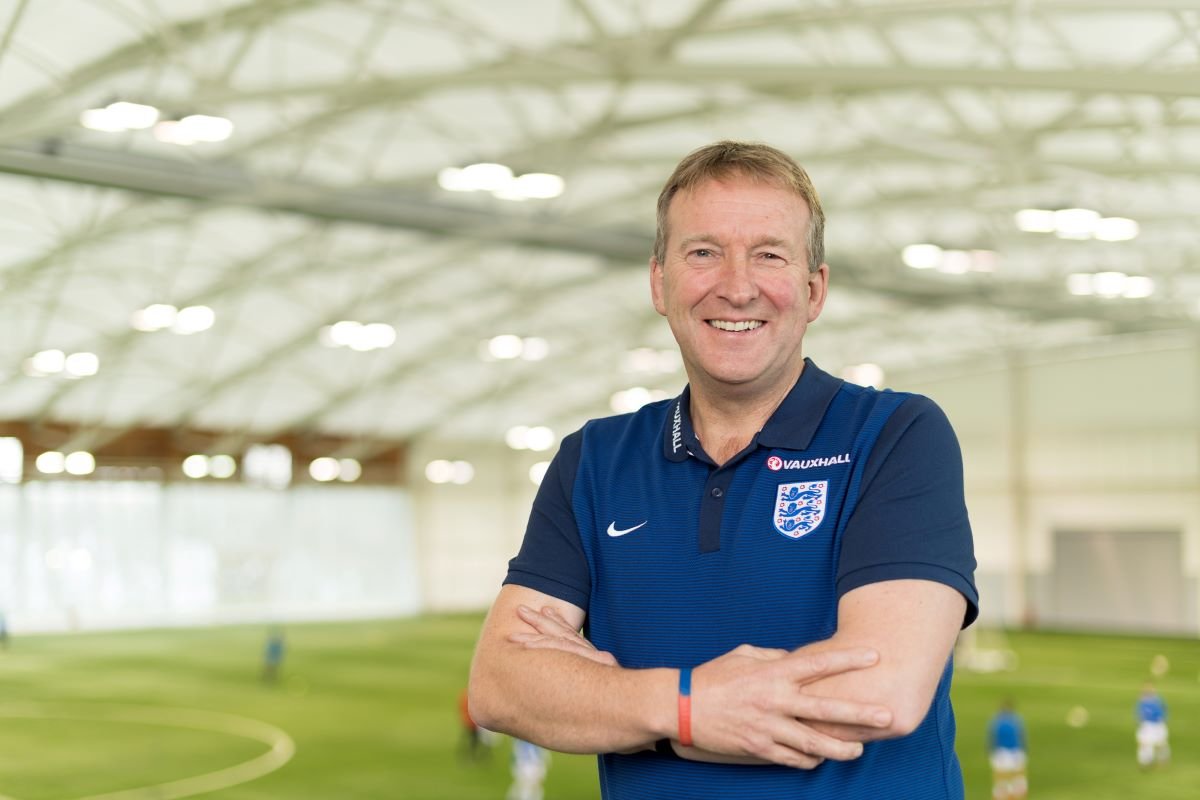
“My arrival at The FA coincided with the launch of The Gameplan for Growth. I joined from Millfield where I was Director of Sport and before that I was Performance Director for England and Great Britain Hockey from 2005 to 2012 attending multiple Olympic and Commonwealth Games.
My role focuses on supporting the performance and workforce development of the Barclays FA WSL and FA Women’s Championship clubs, aspiring to create the best league in the world and supporting England players to achieve their full potential. An international player spends approximately 75% of their time with their club, so creating the right environment for both club and country is paramount for their continued development. We work closely with the clubs, providing strategic leadership to enhance the professionalism of their performance services and day-to-day environments.
As Kelly alluded to, the move to a fully professional Barclays FA WSL and the increased licensing criteria for both leagues saw the clubs commit to increasing standards in every area of performance. From a performance perspective, there needed to be enhanced medical, physical, welfare, education, psychology and social support and a multi-disciplinary [MDT] approach to player and team development at each club. That involves a lot of people and a lot of hard work and the clubs have been hugely impressive in the way they’ve risen to the challenge and progressed season on season. This is a collective journey.
The first key task was to use an evaluation tool from the English Institute of Sport to independently assess all aspects of every Barclays FA WSL club’s performance and their sports medicine services.This gave us a benchmark against other performance sports, as well as across the league and allowed us to create bespoke individual support and review programmes for each club.
From day one we encouraged MDT practice and delivery in clubs, mirroring international performance sport best practice. This has ensured that key performance personnel within the club – Head Coach, doctors, physiotherapists, psychologists, strength & conditioning coaches, nutritionists and others – are collaborating and working to one strategy and common objectives in support of the club’s philosophy and approach.
We are fully committed to the continuous personal development of the Barclays FA WSL and FA Women’s Championship workforce and are regularly connected to the MDTs at all clubs. We host conferences at least three times a year with FA and external speakers and regular webinars and seminars are tailored to individual areas such as MDT development and support of a head coach’s philosophy, physical movement and the physical development of a young female footballer.
Relationships between the England teams and the clubs remain paramount to supporting all potential international players and achieving the common goal of aiding their individual development. Establishing the Women’s Performance System [WPS] confidential medical note system was key here. This links England performance teams from Seniors to Development, with tier 1 and 2 clubs and ensures regular two-way conversations about the progress and development of players, both when they are in camp and with their clubs. The WPS provides live medical tracking of every player, which has been key to better manage injuries and aid rehabilitation.
Key to the long-term reduction of injury is in-depth research into the physical demands of the women’s game. We need to understand the trends and the prevalence of particular injuries compared to others. We have commissioned PHD research projects including:
- How does growth, maturation and athletic ability affect injury prevalence and incidents prevalence?
- How athletically prepared are female footballers to cope with the demands of Barclays FA WSL football?
Alongside the research, we have and are continuing to conduct injury surveillance to better inform our findings in this area. Most recently we have formed The FA women’s football scientific advisory group to look at the depth and breadth of research carried out on the women’s game, to better inform player support and development.
Better support for our next generation of players is assured in collaboration with Talented Athlete Scholarship Scheme [TASS]. This provides support services to WSL academies, covering performance, lifestyle, physiotherapy, physical preparation and medical insurance. For players not at WSL academies, physical preparation and physiotherapy is provided at their nearest TASS delivery centre.
This also aligns with our dual career strategy with Barclays FA WSL and FA Women’s Championship clubs working collaboratively with their nearest Higher Education establishment and has already shown benefits in supporting their education in parallel with their football aspirations.
This vision to make the Barclays FA WSL the best league in the world is very real and I genuinely believe from a performance perspective, we are on track together with the clubs. We’ve made huge strides, particularly in the last two seasons, but there’s no time for complacency – the game continues to evolve and the standards are higher than they have ever been. We cannot sit still, we need to be nimble and adapt our processes. Two-way collaboration and conversation between club and country is vital and we continue to listen and learn from their experiences. If we get this right, we’ll be reaping the rewards in domestic and international football for many years to come.”
CASE STUDIES:
Dawn Airey – Chair of the FA Women’s Super League & FA Women’s Championship Board
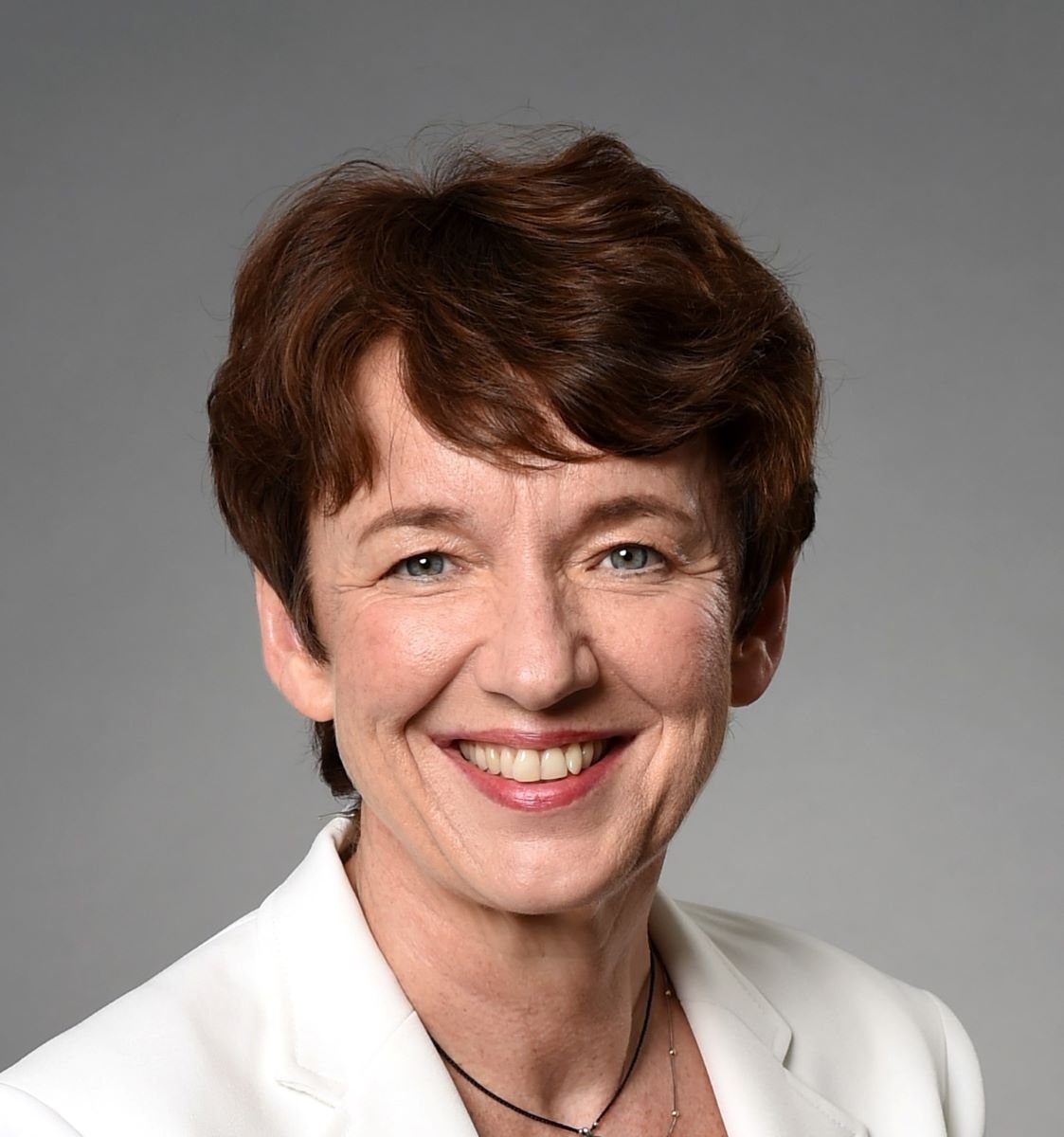
“I am the Chair of the board for the FA Women’s Super League and FA Women’s Championship. I was approached by someone I have known a while and told that The FA wanted to do something new, which was to have a dedicated board devoted to the governance and development of the women’s professional game.
That struck me as a fascinating challenge, so I had a series of conversations that culminated in a final interview. My background is predominantly in television. I ran broadcasters, everything from creating Channel 5 to working at Sky as Managing Director – but not in charge of sport. It was a really good conversation. I really liked the team and that’s important when you take on any role.
I had a limited women’s football background, which was a concern initially. I don’t play football; I haven’t played football and I don’t passionately support one team – although football has always been a part of my life. Interestingly, the board said we don’t want a footballer inside, we want somebody who is sympathetic to the game, is sympathetic to what we are trying to do and who has got commercial experience and good relationships, with amongst other things, broadcasters.
I think it is really important that the two leagues have a dedicated board because this is recognition it deserves its own governance; it deserves its own strategy and it deserves a group that is completely and utterly focused on the development of the women’s game. We have six representatives from the clubs – four from the Barclays FA Women’s Super League and two from the FA Women’s Championship – three FA executive board members and three truly independent board directors. The independent members bring different perspectives via their highly relevant experience and skillsets. It allows us to challenge and support, where appropriate, and to ensure we have the right resources and the right strategy to deliver against The Gameplan for Growth.
It is early days, we have been going just under a year, but what I would say is that we have set out a vision and a strategy for the growth and sustainability of professional football and we have a very clear vision. We want to be the best women’s sports league in the world. That’s really ambitious, but the interesting and exciting bit is how do we get the Barclays FA WSL to become the best league in the world? How do we get the resource? How do we get the development pathway? How do we get the investment into the club? How do we get more broadcast deals? That is what we are looking to focus on.
I think commercial growth is absolutely critical, because football needs money. It is a very high hurdle to create a league that is sustainable financially but we have set ourselves that challenge and we are determined to do it, but it will take time. It has been fantastic to have Barclays as our title partner; they have been exemplary and put in a record amount of money. But what we want to encourage is more brands to be associated with women’s professional sport and women’s football because it is on the cusp of explosion in terms of engagement at every level.
I think women’s football has been an explosion of a movement. I think during the World Cup, women’s football received, rightly, a huge amount of attention and acknowledgment. There was an understanding that this was a different game to the men’s game but was really high quality. These are excellent athletes putting on a great sporting spectacle. The explosion in engagement, audiences and commercial interest in the game has been unprecedented. Pre COVID-19 we have seen attendances go up 174% since 2016. These sort of step changes are for me a very clear demonstration that women’s football is absolutely on the cusp of potential greatness.”
Kelly Chambers – Director of Women’s Football & First-Team Manager at Reading Women

“My main duty as head coach of Reading Women is obviously pushing the first team to higher levels every year and I think we have done that as a club. There’s planning and delivering sessions, analysis of players, opposition analysis, and most importantly, building the relationships with players to get the best out of them. My biggest role as a head coach is to make sure everything gels together and make it click so we can be successful on the pitch.
Turning professional in 2018 was tough to start off with, even though we were part of a professional football club as such. There were a lot of changes and a lot of learning needed to be done from both the players and staff, many of whom hadn’t ever experienced being a professional. Even with regards to myself, I hadn’t played or experienced a professional football environment, so I was learning on the job and seeking support from other people that I knew would be able to help.
The league has definitely become more competitive and the levels of professionalism have increased. I think the standard of football has got better and better year-on-year. The things that clubs have in place – performance support, medial support, coaching support, fitness support – I think every club now is in a completely different place and I think that’s been a big key driver for the quality on the pitch.
Four years ago, you’d have players playing week in, week out and I think now it’s more of a squad. There are more foreign players coming into the league and there’s a lot of learning in that sense – and a lot of teaching. That’s one thing I have seen change, how players need to adapt to professional football and how that has changed year-on-year.
I think it is one of the best leagues in the world. It’s one of the most competitive and I think an aspiration of the league is it needs to stay competitive from top to bottom. We also want to make it more known to everyone, not just those in the women’s football bubble.
From a club perspective The FA have been supportive in trying to build and take steps to get better every year – it’s better now than it’s ever been. The FA has got its vision for the league, where they want it to be and what its purpose is. It’s important for them to do that, to work with clubs to achieve that and make it the best league in the world and to make a winning England team.”
Becky Spencer – Tottenham Hotspur Women player
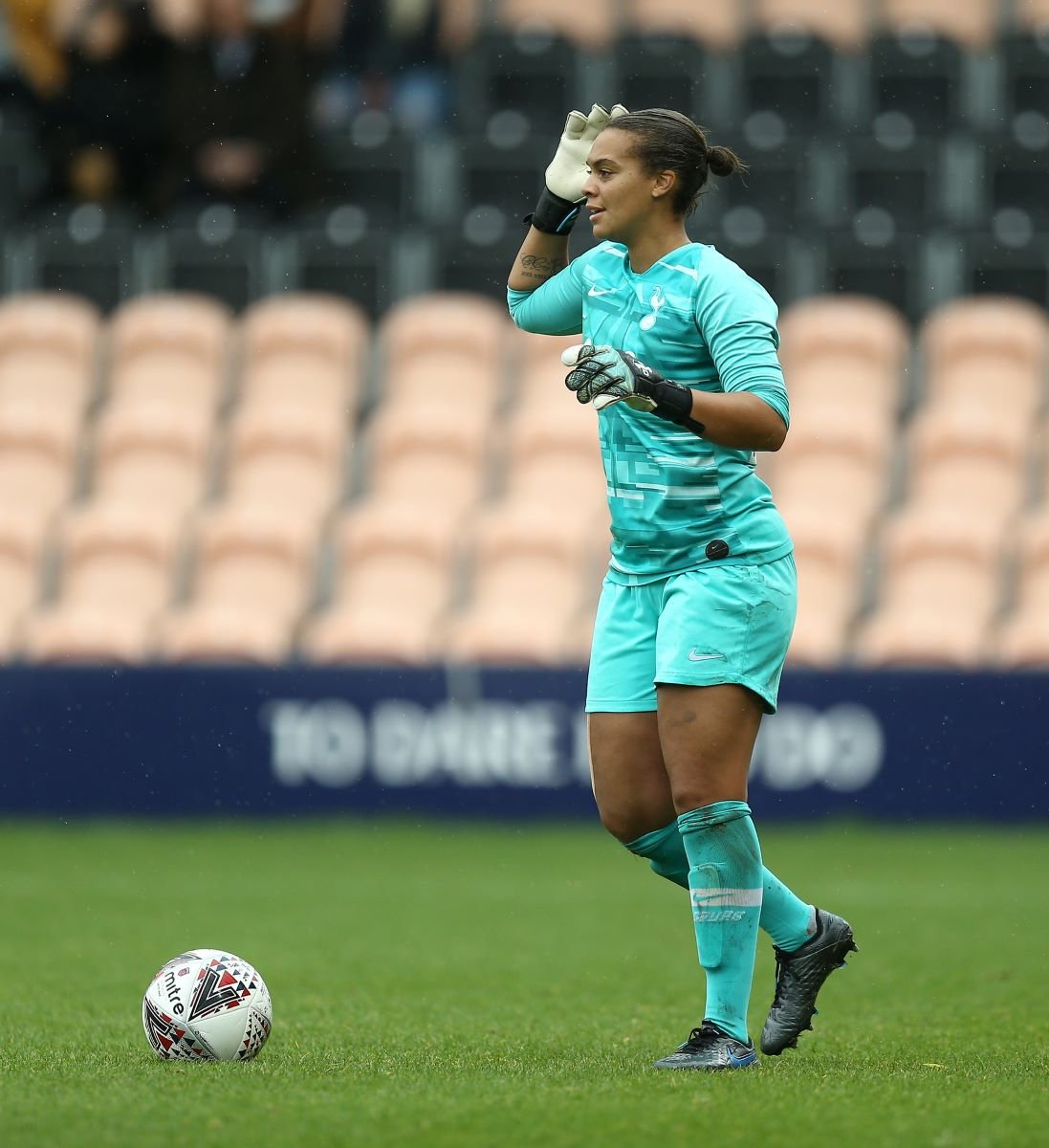
“I’ve been involved in the FA WSL since 2011, so I feel very fortunate to have been part of the women’s game since early on. I’ve seen how the game has progressed over the last few years and it’s been amazing to see and be a part of.
Growing up, I was lucky enough to have my sisters as role models and they played for Wembley FC. I was always around football, whether that was as a mascot or collecting balls – I absolutely loved it. When I was eight years old, I was playing for a boys’ tea
m in Wembley and was picked up by Arsenal where I spent my youth career working my way through the women’s youth team. I then went to Birmingham City and at the age of 24 I turned professional, which was a huge moment for me. Before then, I was working full time in Hertfordshire, and then travelling up to Birmingham every afternoon to train in the evening – it was hard work and a lot of travelling but it made me the player I am today.
The transition to becoming professional was a big step up, but since then I’ve had spells at West Ham, Chelsea and I’m now at Tottenham Hotspur which I’m really enjoying. It’s been an amazing journey and this season I’ve been fortunate to experience some incredible moments.
Last season, I found myself going through a tough time and didn’t really know where I was at in my career, it didn’t have a real focus. This season, the support we’ve received and the opportunity to play for a club like Tottenham has brought back my love for the game and I now feel like I have a belonging.
One of the turning points for me was playing at big grounds in front big crowds, such as The London Stadium, Stamford Bridge and The Tottenham Hotspur Stadium. The latter came against Arsenal, during Women’s Football Weekend last year and there were over 38,000 fans in the stadium. Walking out at The Tottenham Hotspur Stadium in front of a record-breaking crowd, the atmosphere was amazing and seeing my family and friends in the crowd cheering me on was an incredible feeling. It was a new experience for many of the girls and definitely a learning curve, but at that moment, I really felt like we belonged there. I made sure I took time to reflect on the moment afterwards and couldn’t stop smiling.
The buzz is completely different around the women’s game now and that makes me extremely happy and excited for the young girls who are aspiring to play football. It’s so important to have the support, structure and pathway to develop the younger generation of footballers so we continue to produce home grown female footballers.
Over the last three years it’s been fantastic to see the growth and investment within the women’s game. Without a doubt the fanbase has grown and without them, it really wouldn’t be the game it is today. It’s been an important shift to provide more opportunities for fans and families to come and watch games and the promotion around matches means the word is spreading.
We’re finally coming to the point where the professional side of the game and every part of women’s football in this country is now so big. At the beginning, I remember walking into grounds with only 300 fans in the crowd, and now we’re breaking record attendances at The Tottenham Hotspur Stadium. I just hope we can keep pushing on and growing the game even further.”
Ivo Ribeiro Nunes – Women’s & Girls’ Lead Strength and Conditioning Coach at Brighton & Hove Albion
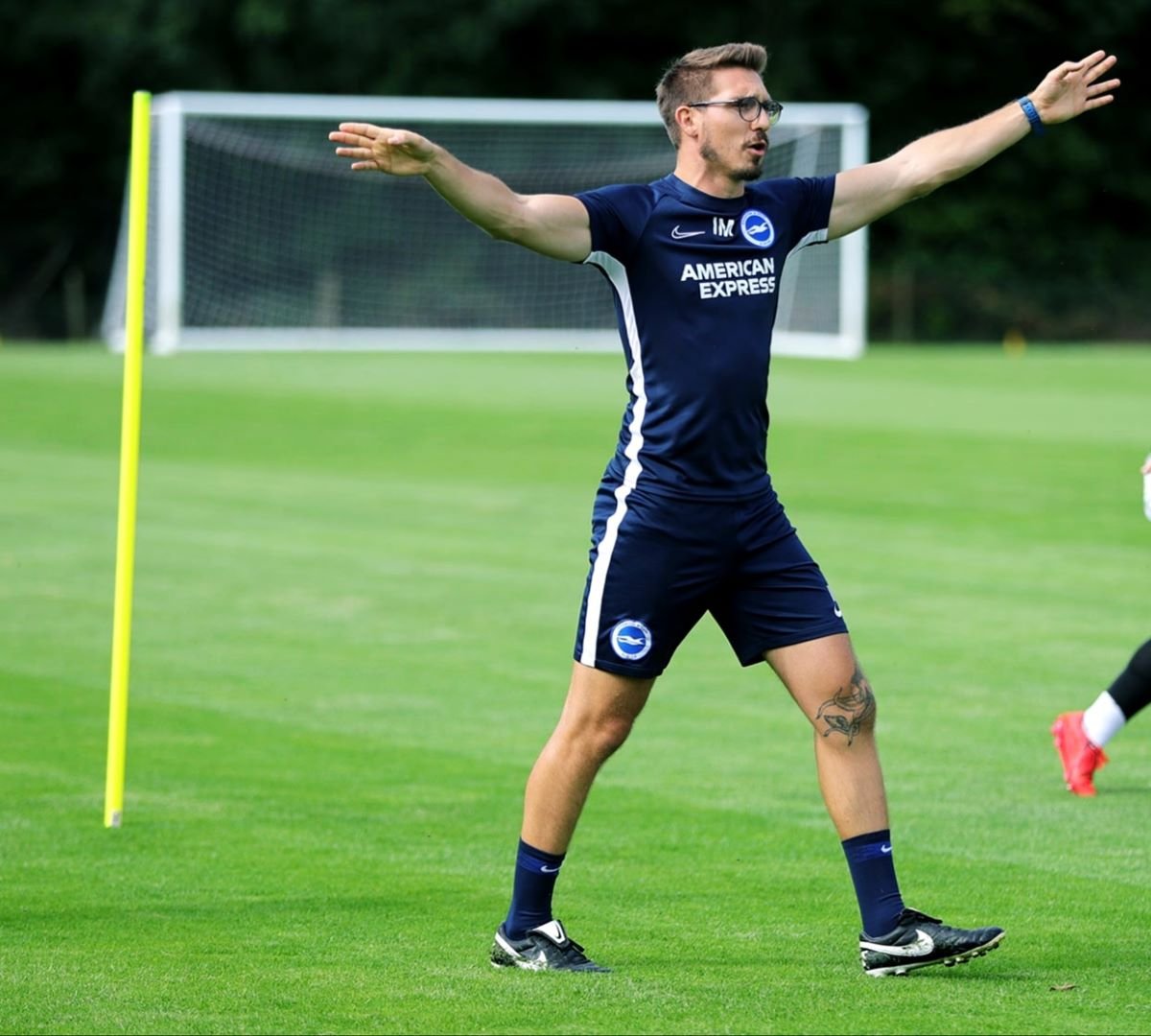
“I first started in my role as the Women’s and Girls’ Lead Strength and Conditioning Coach at Brighton & Hove Albion five years ago. Previously, I worked at Millwall Lionesses and from then on, always knew I had a passion for working in the women’s game.
Within the last three years, the women and girls’ game has progressed significantly especially when it comes to the professional league. Within my experience, the growth of the game has meant the competition has developed amongst the league and players meaning we have had to work harder to prepare the players both mentally and physically to keep up with the growing standard of the women’s game.
The competition has risen, there are more league games, bigger stadiums and the atmosphere and surroundings have changed. With the growth, our performance approach has had to adapt with the increasing demand and we now ensure the players’ strengths and weaknesses are worked on daily when it comes to preparation. It’s important to prepare for the specific games in ways which will bring the best out of the player, so we work closely with each individual to structure their workouts and training to best suit them. It’s certainly meant more work on their fitness and robustness, especially when transitioning to a full-time program, however it’s been a great challenge as a Strength and Conditioning Coach.
As a club, we have meetings with The FA’s High Performance Team every three months. The meetings mainly consist of us reviewing our performance support impact which is usually a collaborative discussion where both The FA and the club update on the latest plans. The FA High Performance Team then discuss and support us on our approach to ensure we are aligning on the performance strategy from both a domestic and international level. Both teams aim to grow the game and the players so it’s important to have a clear approach and collaboration across both areas.
The collaboration allows us to ensure we are always improving not just the players but also the staff. The FA also invest their time and resources in club practitioners to ensure the FA WSL performance support is always developing at a professional standard. Ryan King and the team were great in mentoring me through my UKSCA [The United Kingdom Strength and Conditioning Association] accreditation which was a huge help to me and allowed me to progress in my role. The support I received from The FA highlights the strong relationships between country and club and demonstrates their investment to ensure the best set up is provided for the players.
It’s an exciting time to be a Strength and Conditioning coach in the Barclays FA WSL with the game growing so quickly over the past three years. I’m certainly looking forward to seeing how the league will continue to grow in the future.”



